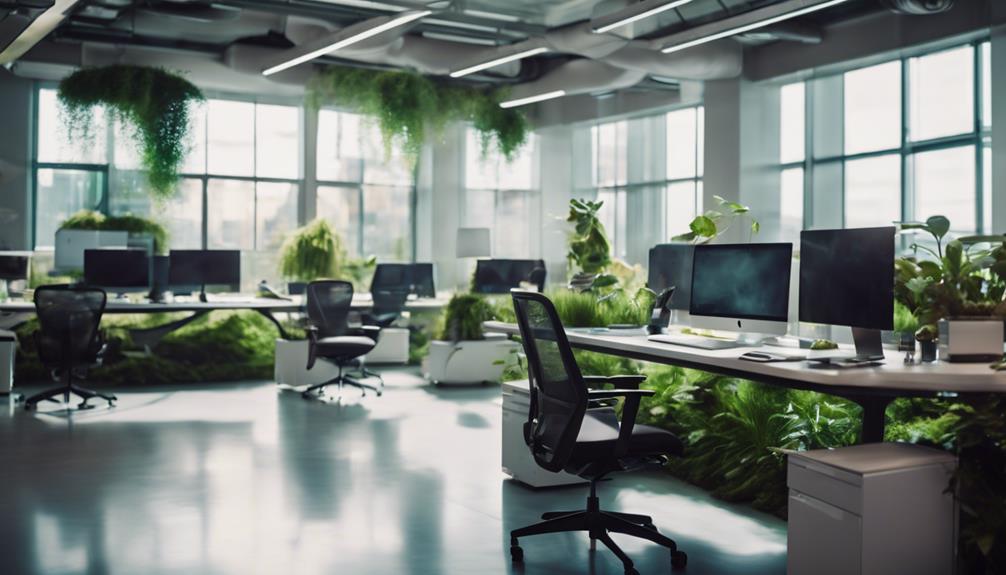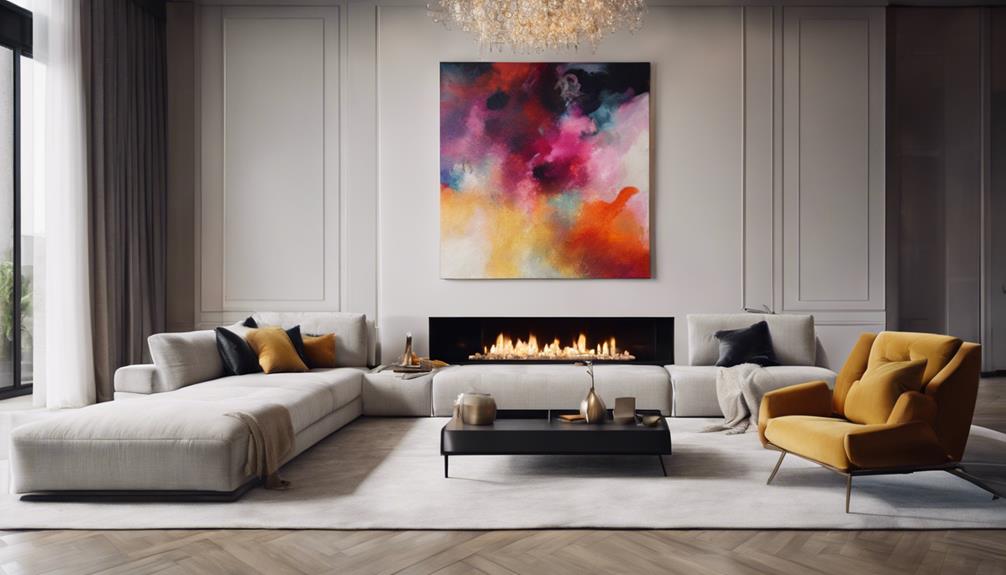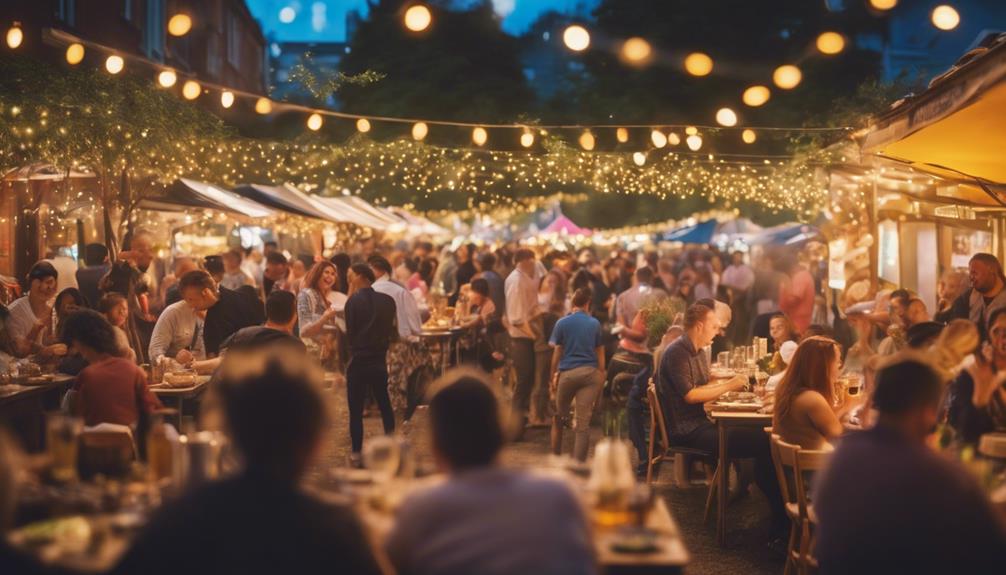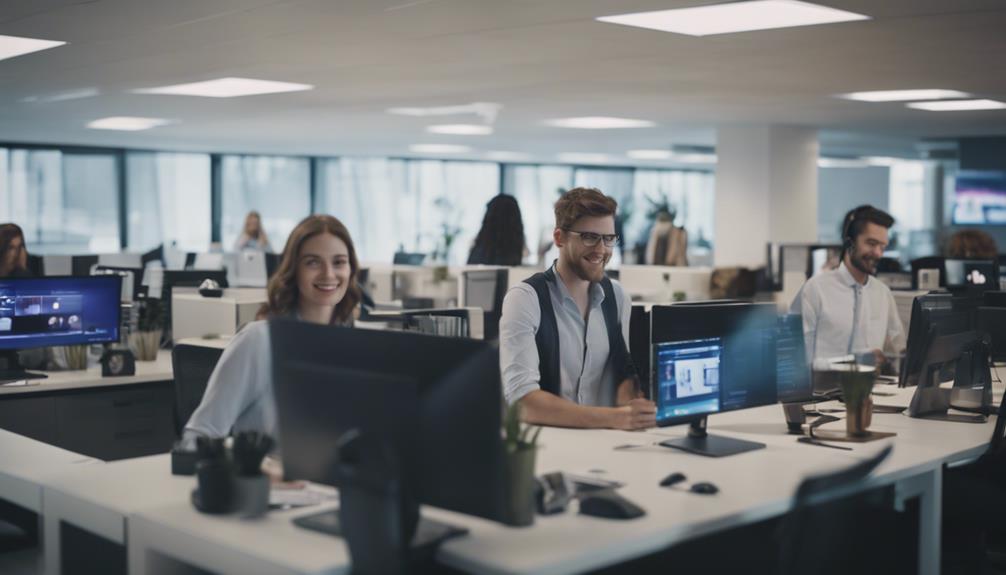Transforming tomorrow's office design trends focuses on flexibility, sustainability, and employee well-being. You'll find open layouts that boost collaboration and agile workspaces tailored for various tasks. Movable furniture makes it easy to reconfigure spaces, adapting to your team's needs. Sustainable materials and eco-friendly practices create healthier environments while reducing your carbon footprint. Plus, design features like natural lighting and leisure areas promote comfort and community among employees. With advancements in technology, modern offices support remote work and seamless communication. Explore how these trends can redefine your workspace and enhance productivity in ways you might not expect. These dynamic spaces also incorporate personalized elements that reflect company culture, making the workplace more engaging and inspiring. Interestingly, stylish cubicles are back, offering privacy and focus without compromising aesthetics or the collaborative spirit of open layouts. By balancing innovation with functionality, tomorrow’s offices promise to be as versatile as the people who use them.
Key Takeaways
- Open and agile workspaces promote collaboration and adaptability, enabling seamless transitions between brainstorming, quiet work, and meetings.
- Embracing sustainability through eco-friendly materials and furniture designs fosters healthier work environments while reducing carbon footprints.
- Movable furniture solutions enhance flexibility, allowing for quick reconfigurations to meet evolving team needs and preferences.
- Integrating technology, such as smart meeting rooms and mobile workstations, enhances communication and supports hybrid work models.
Open Space Innovation
Open space innovation transforms your office into a vibrant hub where collaboration thrives and creative ideas flow freely among teams.
By embracing an open layout, you create a welcoming atmosphere that enhances communication and fosters camaraderie among employees.
Agile workspaces take this a step further, offering flexible zones tailored to various needs—be it brainstorming, quiet work, or meetings. Movable dividers and adaptable furniture allow for quick reconfiguration, ensuring your team can pivot as projects evolve.
These design elements not only facilitate spontaneous discussions but also prioritize health and safety with spaced seating arrangements.
Ultimately, an open workspace cultivates a dynamic environment that encourages creativity and boosts productivity, making it essential for modern office design.
Embracing Sustainability
Embracing sustainability in office design not only reduces your carbon footprint but also creates a healthier, more inviting workspace for employees.
By prioritizing natural materials and renewable energy, you can enhance your office's eco-friendliness. Choosing eco-friendly furniture and decor aligns with the open-office aesthetic while promoting a positive environment.
Consider integrating fair trade products and implementing recycling efforts to minimize waste. Utilizing rental furniture is a smart way to reduce landfill contributions and adapt your space as needed.
Movable Furniture Solutions
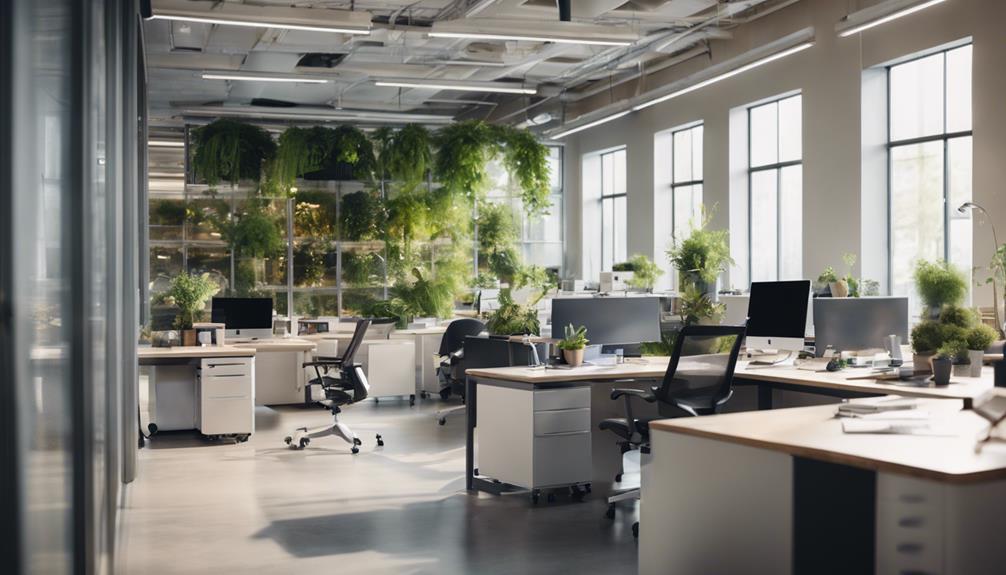
Movable furniture solutions transform your workspace by offering flexibility and comfort, allowing you to easily adapt your environment to meet changing needs.
With desks and chairs on wheels, you can effortlessly reconfigure your layout for team meetings or solo tasks. Demand for modular furniture is rising, enabling you to utilize space efficiently with multi-functional pieces.
Rental options add cost-effectiveness while ensuring ergonomic designs prioritize your comfort.
Movable partitions and walls provide the ability to create distinct areas for collaboration or quiet work, facilitating quick adjustments when necessary.
This adaptability not only enhances productivity but also supports a dynamic work atmosphere where you can thrive, regardless of whether you're brainstorming with colleagues or focusing on individual tasks.
Prioritizing Employee Well-being
Prioritizing employee well-being means creating a comfortable and inviting office environment that supports both mental health and productivity. You'll notice that incorporating leisure spaces, like relaxation zones and informal gathering spots, fosters a sense of community. Consider how your workspace directly influences your mood and engagement.
| Aspect | Emotional Impact | Example |
|---|---|---|
| Natural Lighting | Reduces stress and boosts mood | Large windows or skylights |
| Comfortable Seating | Enhances focus and comfort | Cozy lounges or ergonomic chairs |
| Biophilic Design | Increases connection to nature | Indoor plants or gardens |
| Quiet Zones | Provides mental relief | Designated quiet areas |
| Social Spaces | Encourages collaboration | Casual meeting spots |
Enhancing Collaboration Spaces
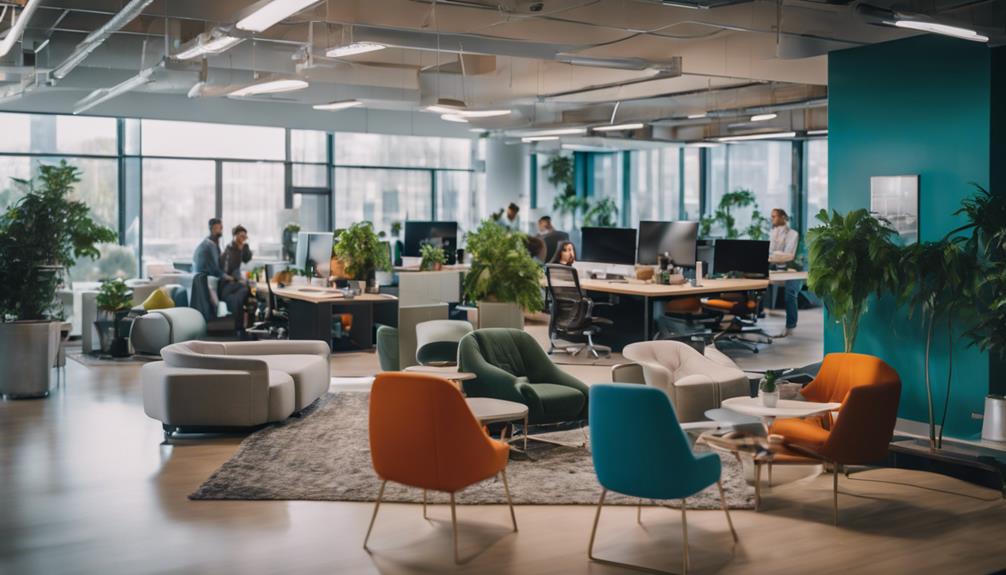
Creating vibrant collaboration spaces is essential for fostering teamwork and innovation among employees. You can achieve this by designing areas that encourage spontaneous interactions and brainstorming sessions.
Implementing agile workspaces with movable furniture lets teams rearrange their environment based on specific needs, enhancing flexibility. Incorporate various zones—like brainstorming nooks, quiet corners, and meeting hubs—to cater to diverse collaboration styles.
Ensure these spaces are equipped with technology that supports both in-person and virtual communication, so everyone feels included. Prioritizing comfort and aesthetics will also make these areas inviting.
Future Adaptations in Design
The future of office design will embrace flexibility and adaptability, ensuring spaces meet the evolving needs of employees in a hybrid work environment.
You'll see designs that prioritize dynamic layouts and technology integration, creating versatile areas conducive to both collaboration and focus.
Movable furniture allows for quick reconfigurations based on team needs.
Natural light and biophilic elements enhance employee well-being and productivity.
Spaces will continually adapt based on employee feedback, fostering a sense of ownership and comfort.
Remote Work Influence
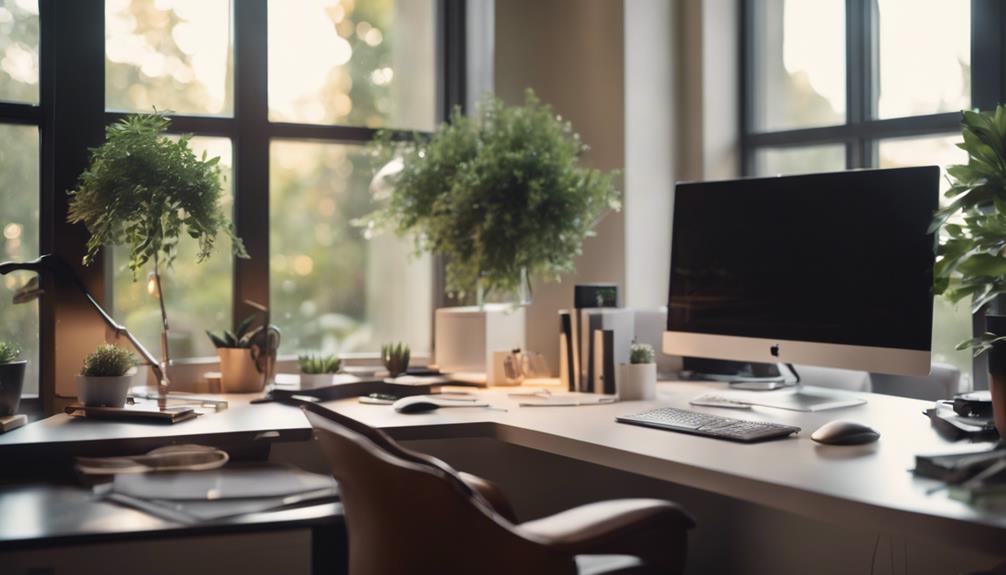
Embracing remote work has transformed office layouts, pushing companies to design spaces that accommodate both in-person collaboration and virtual interactions.
You'll notice dedicated areas for video conferencing, ensuring seamless communication between remote and on-site employees.
Flexible spaces are now essential, allowing for quick reconfigurations based on team needs.
Companies are prioritizing open layouts that foster interaction while also providing quiet zones for focused work.
The shift towards hybrid models means you'll find a mix of collaborative areas and private workstations, promoting a sense of community.
As you navigate these new environments, expect an emphasis on creating inviting atmospheres that cater to everyone, making collaboration effortless whether you're in the office or working from home.
Tech Integration in Offices
Integrating technology into office designs enhances collaboration and productivity, ensuring your workspace meets the demands of modern work styles.
With smart solutions, you can streamline communication and create a more dynamic environment. Here are some key aspects to consider:
- Smart Meeting Rooms: Equip spaces with video conferencing tools for seamless remote collaboration.
- Mobile Workstations: Implement tech-enabled desks that adapt to both individual and team needs, promoting flexibility.
Conclusion
As you embark on this journey through tomorrow's office, think of it as a vibrant garden.
Each design trend, like a unique flower, blooms to create an environment where creativity and collaboration thrive.
By embracing flexibility, sustainability, and well-being, you cultivate a space that nurtures both individual growth and collective success.
So, step into this flourishing landscape, where each element harmonizes to support your work life, and watch as your potential blossoms like never before.

